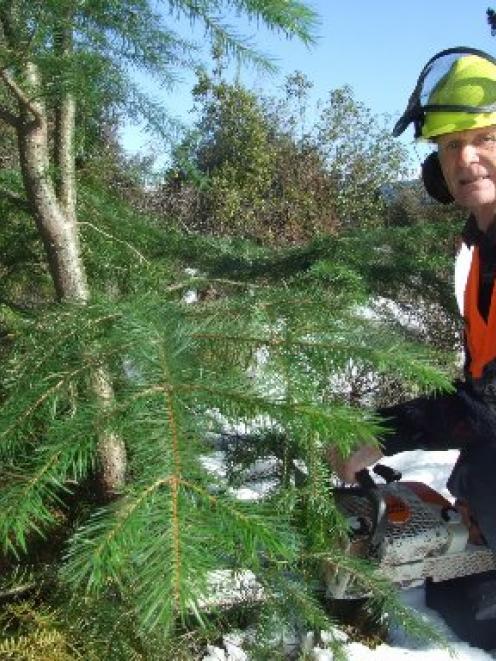
Overview . . . Wakatipu Wilding Conifer Control Group chairman Peter Wilsman, of Queenstown. PHOTO: JOE DODGSHUN
What is it about the Wakatipu Wilding Conifer Control Group that got you interested and continues to interest you?
It is the issue of basically preserving the heritage of historic beech forest in the area . . . With my background, I am a keen tramper in love with the back country, and to come and hear it was going to be overtaken by these wildings left a sense of horror about it.
How is the group benefiting conservation?
In conjunction with Doc, we have controlled 10,000ha over this last year. We are stopping them from smothering our native forest and preserving the direct faces above the places like Walter Peak, Cecil Peak, right down to Kingston, the Remarkables, Roaring Meg and as far as Skippers Canyon.
What do you get out of your work and how do you fit in?
[We get] the intense satisfaction of working on the challenge with people - such as the synergy with Doc - in a joint venture knowing that seeds know no boundaries, and with a huge number of volunteers. We now have a volunteer list of 307 people. In two and a-half years, we have gone from people saying "What are you doing destroying these beautiful trees", to people recognising its importance, so I guess the word educator should be in there, too.
What challenges do you face and how have you overcome them?
We have the challenge of helping the community see the positive contribution that they can leave for their generation and their grandchildren. Secondly, the challenge of getting individual businesses and companies on board to adopt an area to control and finance that. And thirdly, consulting and helping the landowners and station lease-holders to eradicate it where it can be and control it where it can only be controlled.
What would you like to do in the future re conservation?
Just keep at it. What we would like to do is eradicate the area where eradication is possible and contain those faces that have got hold, and particularly to eradicate those areas where there are mature trees that are seed sources for some of our open country.
• Nominated by Doc Wakatipu area office
Advertisement


